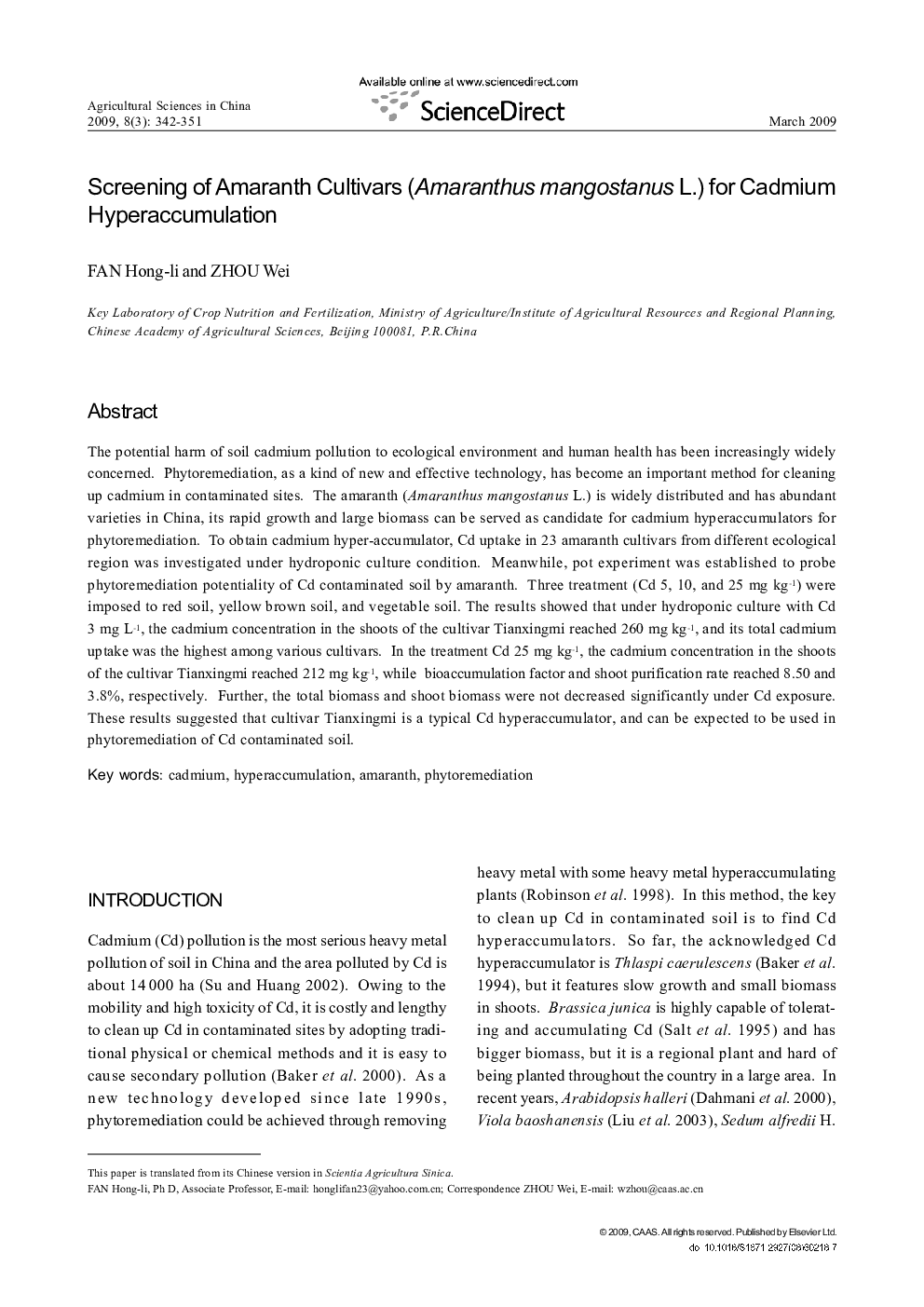| Article ID | Journal | Published Year | Pages | File Type |
|---|---|---|---|---|
| 4490410 | Agricultural Sciences in China | 2009 | 10 Pages |
The potential harm of soil cadmium pollution to ecological environment and human health has been increasingly widely concerned. Phytoremediation, as a kind of new and effective technology, has become an important method for cleaning up cadmium in contaminated sites. The amaranth (Amaranthus mangostanus L.) is widely distributed and has abundant varieties in China, its rapid growth and large biomass can be served as candidate for cadmium hyperaccumulators for phytoremediation. To obtain cadmium hyper-accumulator, Cd uptake in 23 amaranth cultivars from different ecological region was investigated under hydroponic culture condition. Meanwhile, pot experiment was established to probe phytoremediation potentiality of Cd contaminated soil by amaranth. Three treatment (Cd 5, 10, and 25 mg kg−1) were imposed to red soil, yellow brown soil, and vegetable soil. The results showed that under hydroponic culture with Cd 3 mg L−1, the cadmium concentration in the shoots of the cultivar Tianxingmi reached 260 mg kg−1, and its total cadmium uptake was the highest among various cultivars. In the treatment Cd 25 mg kg−1, the cadmium concentration in the shoots of the cultivar Tianxingmi reached 212 mg kg−1, while bioaccumulation factor and shoot purification rate reached 8.50 and 3.8%, respectively. Further, the total biomass and shoot biomass were not decreased significantly under Cd exposure. These results suggested that cultivar Tianxingmi is a typical Cd hyperaccumulator, and can be expected to be used in phytoremediation of Cd contaminated soil.
